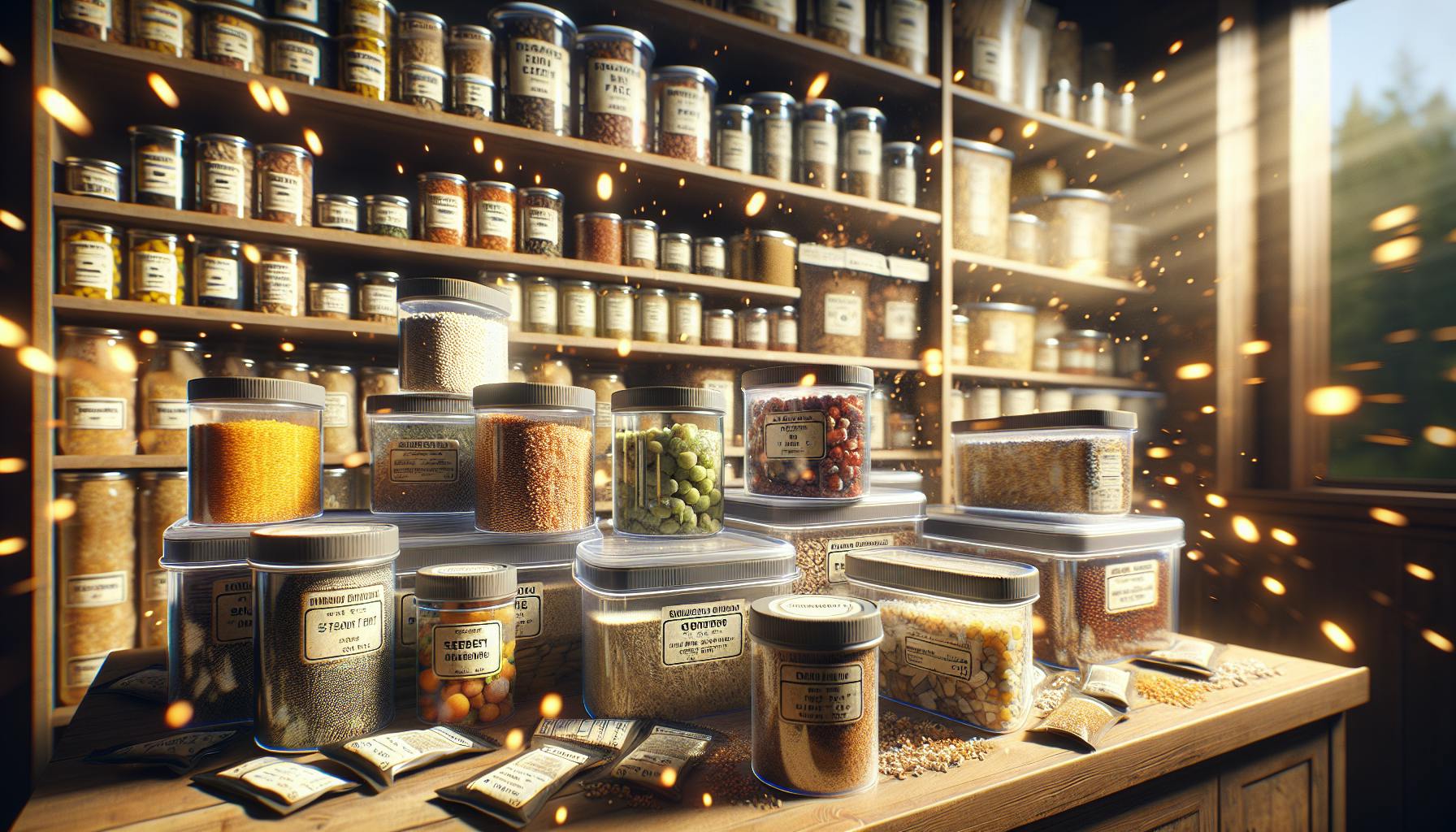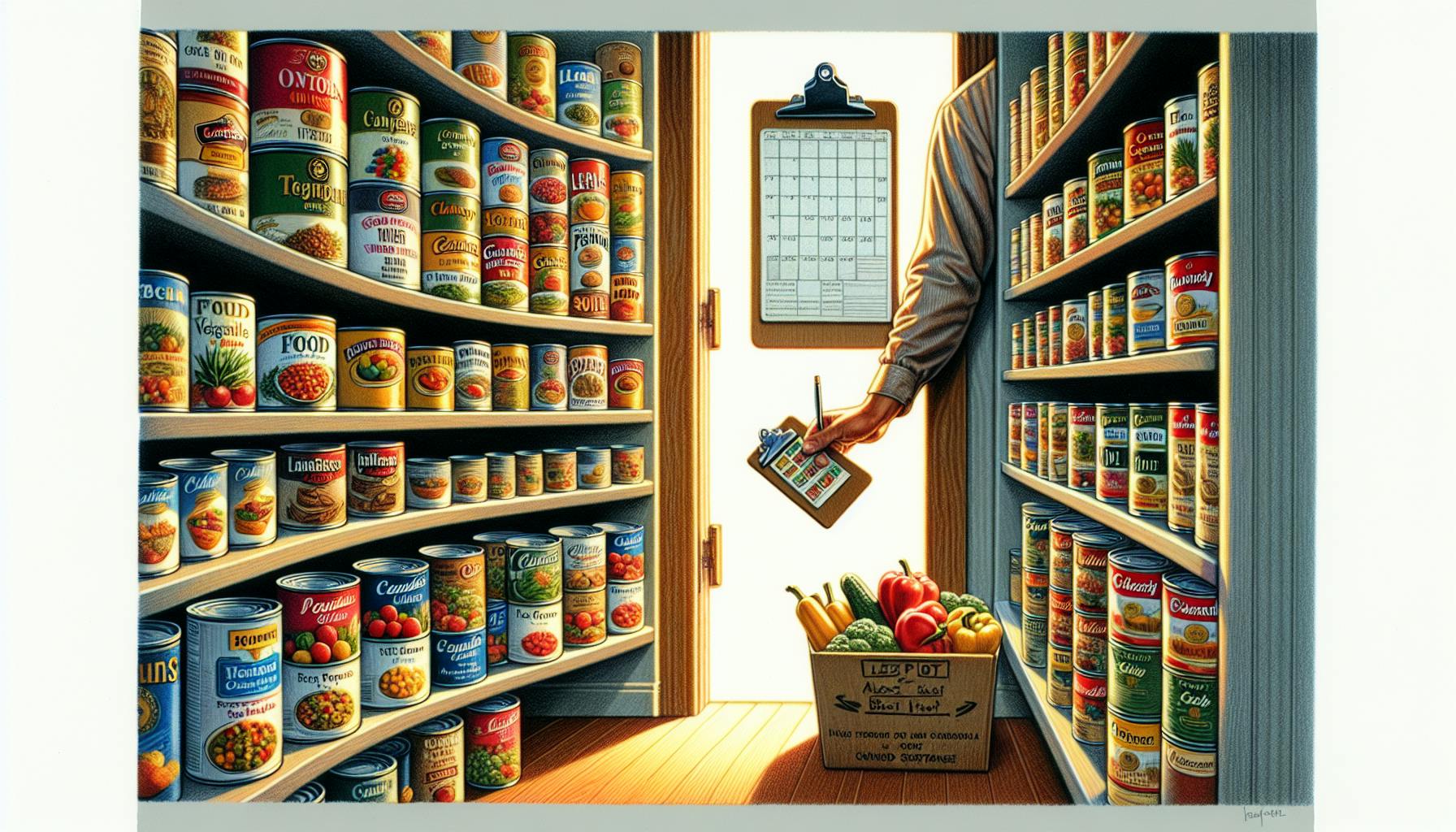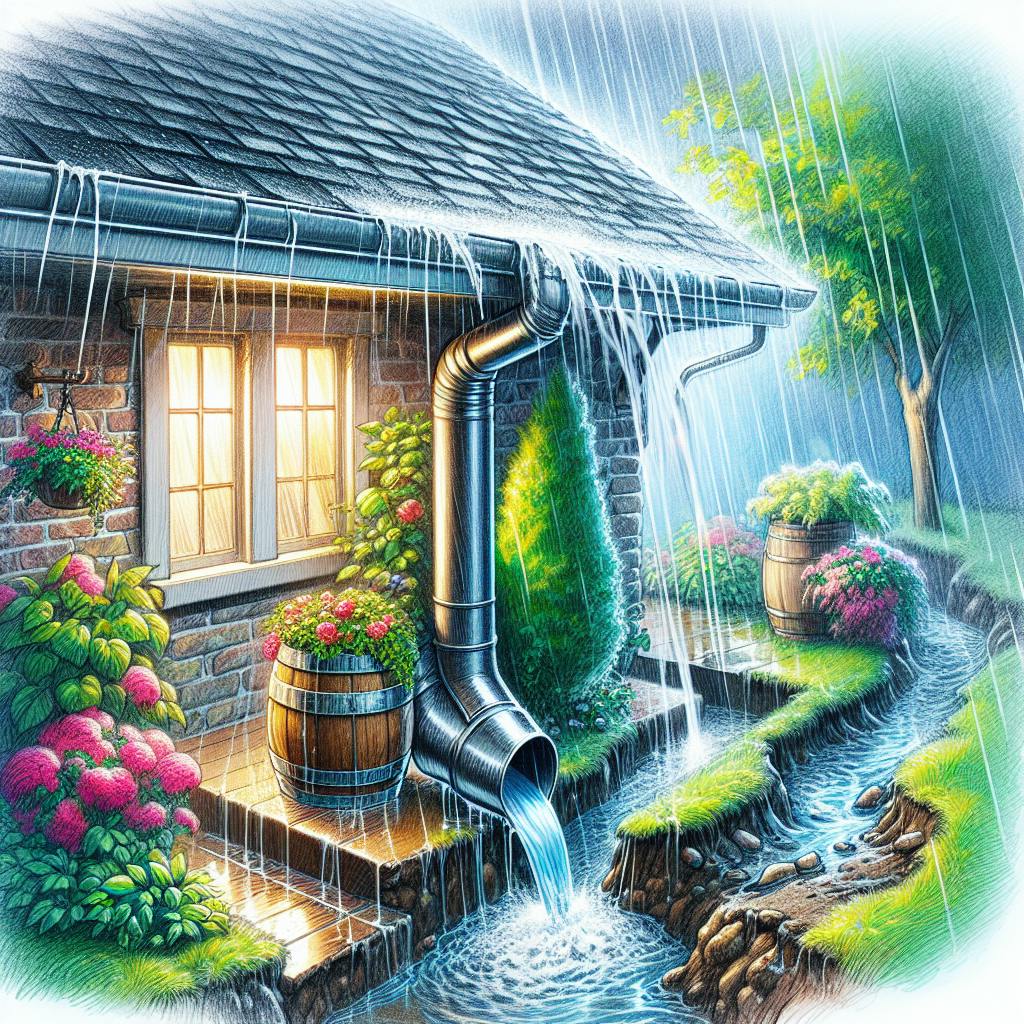When it comes to survival prepping, most people would agree that having the right fundamentals in place is critical for success.
By starting with the essentials like stockpiling crucial supplies, learning key skills, and adopting the proper mindset, even total beginners can establish a solid preparedness foundation.
In this guide, you'll discover the cornerstone prepping supplies to stockpile, must-know survival skills to master, the prepper philosophy for understanding this community, and how to avoid common pitfalls when getting started.
Navigating the Basics of Survival Prepping
This section serves as a comprehensive beginner's guide, emphasizing the significance of a strong foundation in both supplies and knowledge for effective survival prepping.
Understanding Survival Prepping: A Primer for Newcomers
Survival prepping refers to preparing for emergencies or disasters by gathering necessary supplies and learning key skills. Common reasons people engage in survival prepping include:
- Being ready for natural disasters like earthquakes, hurricanes, or tornadoes
- Preparing for civil unrest or societal collapse
- Having provisions in case of extended power outages
- Ensuring safety if lost in the wilderness
When getting started with survival prepping, it's important to have both the right physical gear and knowledge to use it effectively. Key supplies like a well-stocked survival kit and shelf-stable food are crucial. But you also need to know survival skills like first aid, navigation, shelter building, and more.
Approaching prepping with a beginner's mindset is essential - start small and focus on the fundamentals before expanding your preparations. This will ensure you have a solid foundation to build upon. Refer to prepper resources and communities to continue expanding your knowledge over time. With the right balanced approach, survival prepping can provide much-needed peace of mind to handle uncertain events.
How do I start prepping for survival?
Prepping for survival starts with building a solid foundation focused on meeting basic needs in an emergency. Here are some key areas for beginner preppers to focus on:
Gather Emergency Supplies
Start by putting together an emergency kit with essentials like:
- Long-lasting food & water - Stock up on non-perishable foods like canned goods, MREs, and emergency ration bars that can last 25+ years. Have at least 1 gallon of water per person per day.
- First aid supplies - Adhesive bandages, gauze, antibiotics, over-the-counter meds.
- Hygiene & sanitation items - Soap, toilet paper, feminine products, bucket toilet.
- Tools & safety gear - Flashlights, batteries, multi-tool, duct tape, work gloves.
- 72-hour bag - Have a bug out bag ready with 3 days worth of critical supplies for your family.
Learn Key Skills
Beyond gathering gear, read up on and practice key skills like:
- Emergency medicine - Take a first aid class so you can treat injuries.
- Food procurement & preparation - Learn trapping, fishing, hunting skills. Practice cooking with a camp stove.
- Navigation - Study terrain, compass use to navigate without modern technology.
- Self-defense - Take self-defense courses focused on situational awareness, de-escalation tactics.
Starting with the fundamentals will put you on solid ground. Then you can expand your knowledge and supplies for longer-term scenarios. Check our bug out bag essentials guide for more!
What is survival prepping?
Survival prepping refers to proactively preparing for emergencies and disasters to ensure self-reliance when social order breaks down. It involves stockpiling critical supplies, learning key skills, and making contingency plans to improve one's ability to handle crises.
The prepper movement encompasses individuals and groups who ready themselves for events like natural disasters, economic collapse, cyber attacks, and more. Preppers assemble "bug out" bags with gear like food, water, first aid, tools, and off-grid power. They also gain competencies in survival tactics, bushcraft, gardening, hunting, and homesteading.
At its core, prepping fulfills basic human needs for safety and security. By equipping homes with backup systems and stockpiles, preppers aim to handle extreme scenarios. With the right planning and provisions, they can shelter in place or evacuate an impacted area. While an emergency can disrupt normal life, preparedness limits the disruption's impact.
With ever-growing global threats emerging, an increasing number of individuals now engage in survival prepping. They run the gamut from urban apartment dwellers to rural homesteaders. While motivations differ, all preppers share a mindset rooted in self-reliance, critical thinking, and responsible citizenship. When crisis strikes, they stand ready to provide for themselves and assist others.
What are good things to stockpile?
When building your survival stockpile, focus on shelf-stable foods that do not require refrigeration and are lower in sodium content. Canned goods like beans, vegetables, and fruits packed in their own juices are excellent choices. Make sure to stock up on proteins like canned tuna, salmon, chicken, and nut butters. Round out your food supplies with whole grains, nuts, dried fruits, and nutritious snack items.
You'll also want to stockpile other basic disaster preparedness items like:
- Flashlights and extra batteries
- Battery-powered or hand-crank radio
- Manual can opener
- First aid kid
- Prescription medications
- Copies of important documents secured in waterproof bags
- Extra pet food if needed
Don't forget comfort items to help relieve stress like books, games, puzzles etc. Tailor your stockpile to your family's needs by including supplies like:
- Infant formula and diapers if you have a baby
- Contact lens solution
- Feminine hygiene products
The key is covering your basic survival needs while also prepping supplies customized to your situation. Start with the essentials and build up your survival prepping stockpile over time.
sbb-itb-b932644
What is the first rule of prepping?
The first rule of prepping is: you do not talk about prepping. This adage underscores the need for discretion when it comes to discussing your survival plans and preparations with others.
Loose lips sink ships, so it's best to keep the specifics of your food storage, bug out location, water filtration methods and other critical information private. After all, in an emergency situation, the last thing you want is unexpected guests showing up unprepared and expecting you to provide for their basic needs.
That said, connecting with a small group of like-minded friends whom you implicitly trust can provide community and support. Just be selective in terms of who you decide to include in your inner circle. Ultimately, survival depends largely on your own preparedness, resourcefulness and ability to maintain operational security.
When interacting with anyone outside of your trusted circle, it's perfectly fine to express general concerns about emergencies without divulging specifics. If directly asked about your preps, deflection, subtle misdirection or polite refusal to discuss personal matters is often the most prudent approach.
Discretion is key for effective prepping. Keep the operational details to yourself and always remember - the first rule of prepping is you do not talk about prepping.
Prepper Supplies: Building Your Disaster Survival Kit List
Creating a well-stocked disaster survival kit is essential for preppers. When an emergency strikes, having the right supplies on hand can literally make the difference between life and death. This guide will provide an overview of key items to include in your prepper supplies and survival kit list.
Water and Food: The Cornerstones of Any Survival Kit
Clean water and non-perishable food should form the foundation of any comprehensive survival prepping kit. Here are some recommendations:
- Water - Stockpile at least one gallon of water per person per day for drinking, cooking, and hygiene. Consider storing purified water in sealed containers as well as water filtration devices.
- Food - Prioritize calorie-and nutrient-dense foods with long shelf lives like rice, beans, canned meat/fish, nuts, dried fruits, and MREs (Meals Ready-to-Eat).
- Rotate stock every six months to avoid expiration. When possible, pack foods you already eat to avoid waste.
- Alternative Cooking Sources - Pack a camp stove, fuel, and mess kit for boiling water and cooking food without electricity.
By prepping adequate water and food reserves, you'll ensure your basic survival needs are covered during a disaster scenario.
First Aid Essentials: Preparing for Health Emergencies
Medical emergencies can arise suddenly, so preppers must equip themselves to handle injuries and illnesses. Below are some first aid essentials:
- First Aid Kit - Stock adhesive bandages, gauze pads, medical tape, antiseptic wipes, antibiotic ointment, medical gloves, trauma shears, tweezers, a CPR face shield, and other vital supplies.
- Medications - Gather critical prescription medications plus over-the-counter pain/fever relievers, anti-diarrhea medication, antacids, allergy medication, etc.
- Instructional References - Print guides on administering first aid, recognizing symptoms, dosing medications, etc. as hard copies in case of power failure.
A well-stocked first aid kit tailored to your family's specific needs could save a life when professional medical care is inaccessible.
Essential Tools and Gear: From Basic to Advanced Survival Kit Items
In addition to food, water, and first aid, preppers should equip themselves with tools and gear to handle various emergency scenarios:
- Multi-Tools - Pack versatile tools like swiss army knives, pliers, screwdrivers, hex keys, etc. Tools allow you to construct shelters, make repairs, open cans, cut bandages, and more.
- Fire-Starting Items - Stay warm and cook by packing weatherproof matches, lighters, flint strikers, tinder, and fire starter blocks specifically designed to ignite even when wet.
- Light Sources - Solar powered flashlights, lanterns, glow sticks, and headlamps allow you to navigate safely in the dark.
- Emergency Radios and Chargers - Crank radios provide access to emergency broadcasts. Solar chargers allow you to power devices.
The right assortment of gear and tools for survival situations further enhances your preparedness and self-reliance.
Evacuation Preparedness: Crafting Your Bug Out Bag
A "bug out bag" contains a subset of supplies prepared for the possibility of quickly evacuating your home due to a disaster. Tailor your bag to your needs, but some universal items include:
- High-calorie non-perishable foods
- Water purification tablets
- First aid supplies
- Flashlight
- Radio
- Extra batteries
- Multitool
- Cash
- Maps
- Seasonal clothing/shoes
- Toiletries and hygiene items
With an emergency bug out bag pre-packed, you can rapidly depart carrying the essentials for survival.
By stocking water, food, first aid, tools, and evacuation gear, preppers equip themselves to confront diverse disasters from natural catastrophes to societal collapse. Adapt your supplies to your skills, household, region, and likely risks. Revisit your inventory every three to six months to replace expired/degraded gear and replenish stock as needed. With thoughtful effort, you can achieve survival prepping self-sufficiency.
Survival Skills: The Preppers' Guide to Self-Reliance
Survival prepping goes beyond just stockpiling supplies - it's also about cultivating the fundamental skills needed to become truly self-reliant. When disaster strikes or societal structures collapse, preppers aim to sustain themselves and their loved ones without having to depend on others. This means learning techniques that were second nature to our ancestors but seem almost forgotten in modern times.
Let's explore some of the key competencies preppers should develop on the road to self-sufficiency.
Mastering Fire Making and Water Purification Techniques
The ability to start and maintain a fire is an essential survival skill. Not only does fire provide warmth, allowing you to regulate your body temperature, but it also enables activities like cooking food and boiling water. Preppers should become adept at making fire using primitive friction methods, matches, lighters, magnesium fire starters, and even magnifying lenses. Practice your skills ahead of time instead of fumbling with them for the first time during an emergency.
Alongside fire, having access to clean drinking water is critical. Contaminated water can cause serious illnesses, so preppers must know how to filter, disinfect, or distill water from natural sources. Simple filtration systems like cloth through charcoal remove sediments and parasites. Boiling water kills most microbes, while chemical treatments like iodine or chlorine dioxide work to sanitize drinking water when boiling isn't possible. Condenser-based devices allow you to distill water for maximum purity no matter how polluted the source.
Shelter Construction and Foraging: Back to Basics
When disaster displaces you from your home, the ability to construct makeshift shelters offers protection from the elements. Preppers should learn skills like how to build debris huts, make thermal insulation from dried leaves or pine boughs, and waterproof rooftops using tarps. Even rudimentary structures and insulation can help regulate exposure during harsh weather.
In tandem with shelter-building, foraging skills allow preppers to source food from the landscape around them. Identifying edible wild plants, fishing, hunting small game, and trapping are talents that boost self-reliance. Start by studying which native flora in your region can be eaten or used for medicinal purposes. Stockpile fishing line, lures, firearms for hunting, and trapping supplies. Hone these capabilities now before you end up relying on them.
Self-Defense: Staying Safe When Law and Order Break Down
During societal collapse, emergency services and law enforcement can become non-functional. Preppers must know how to defend themselves, their families, and their supplies. Self-defense training in martial arts, firearms proficiency, perimeter alarms, two-way radios, and community cooperation helps keep preppers safe.
Consider enrolling in martial arts courses to gain hand-to-hand defensive techniques. Ensure every responsible, able-bodied adult knows how to competently handle firearms for security purposes. Rig perimeter alarms and camera systems around your home or bug out location. Use two-way radios to coordinate community patrols with like-minded neighbors, collaborating to provide mutual aid. The ability to protect yourself and loved ones is a solemn duty preppers must prepare for.
Equipping yourself with fundamental survival skills ahead of crises is what distinguishes preppers from the unprepared masses. Don't wait until an emergency to develop critical competencies like fire craft, water purification, shelter building, foraging, and self-defense. Start honing these talents now to achieve true self-reliance.
The Philosophy of Prepping: Understanding the Prepper Mindset
Prepping is more than just accumulating supplies - it requires cultivating a mindset of readiness and resilience. At its core, the prepper philosophy emphasizes self-reliance, vigilance, and adaptation in the face of adversity.
What Are Preppers Preparing For? Unpacking the Prepper Mentality
Preppers anticipate a wide range of disruptive scenarios, both natural and man-made. These include:
- Natural disasters like hurricanes, tornadoes, floods, earthquakes, and winter storms
- Infrastructure failures leading to power grid or supply chain breakdowns
- Economic volatility or financial collapse
- Global pandemics and disease outbreaks
- Civil unrest, crime waves, or cyber attacks
No matter the situation, preppers share key traits: ingenuity, vigilance, self-sufficiency, and survival skills. Their motivations stem from protecting themselves, their families and communities. Survival prepping requires foresight to navigate uncertainty.
Crafting a Strategic Prepper Plan: Your Blueprint for Preparedness
An effective prepper plan has two components:
- Supplies - Stockpile 1-3 months of food, water, medicine, tools, and gear. Create a survival kit for emergencies. Invest in renewable power, fuel, sanitation and security measures.
- Skills - Take survival, first aid, self-defense and homesteading classes. Learn to grow food, forage, hunt, fish and make repairs. Study ham radio operation.
Continuously review and refine your plan. Run emergency drills to test readiness. Join local prepper groups to share knowledge. Update your supplies and skills as your situation changes.
Building a Network: Connecting with the Prepper Community
While preppers pride self-reliance, connecting with like-minded individuals has many benefits:
- Share knowledge and survival prepping best practices
- Trade skills and extra resources
- Gain emotional support and motivation
- Collaborate in an emergency for increased safety
The internet makes networking accessible through forums, groups and social media. Also build local relationships by organizing community preparedness programs.
Navigating Prepper Challenges: How to Avoid Common Mistakes
Success in survival prepping requires avoiding three hazards:
- Information overload - Stick to reputable sources. Focus your efforts on proven methods.
- Unbalanced priorities - Don't become consumed by prepping. Maintain relationships and routines.
- Financial strain - Build your supplies gradually. Start with affordable essentials, like food, water and first aid.
Prepping requires ongoing fine-tuning for efficiency and practicality. Collaboration is key - work with neighbors to combine knowledge, avoid duplication, and resolve gaps.
The prepper journey requires commitment and level-headedness. But the peace of mind and resilience developed is invaluable. With the right approach, preppers gain the tools to navigate nearly any crisis.
Conclusion: The Essentials of Survival Prepping
Survival prepping is all about being ready for any emergency or disaster by prioritizing the vital steps, supplies, and skills needed to protect yourself and your loved ones. Getting started doesn't require exhaustive research or expensive gear - just solid foundational knowledge and some simple yet indispensable preparation.
The fundamentals of a survival prepper's readiness plan include:
- Assembling a basic survival kit with essentials like food, water, first aid, fire-starting tools, flashlights, and shelter. Even a modest collection of critical items can greatly aid survival in an emergency. Consider a bug out bag or small kit to keep in your home, office, and vehicle.
- Learning fundamental skills like first aid, fire-starting, outdoor navigation, and disaster communications. Both knowledge and practice of these abilities can prove invaluable when infrastructure and outside assistance are unavailable. Consider taking classes, watching instructional videos, and getting hands-on experience.
- Making a preparedness plan for you and your family to follow in crisis scenarios. Include meeting places, communication methods, survivable shelters, evacuation routes and basic procedures. Ensure everyone is aware of and understands their responsibilities. Update plans regularly.
By focusing on the basics - assembly of key gear, acquisition of fundamental skills, and creation of actionable readiness plans - survival preppers can efficiently establish the groundwork for emergency preparedness.


